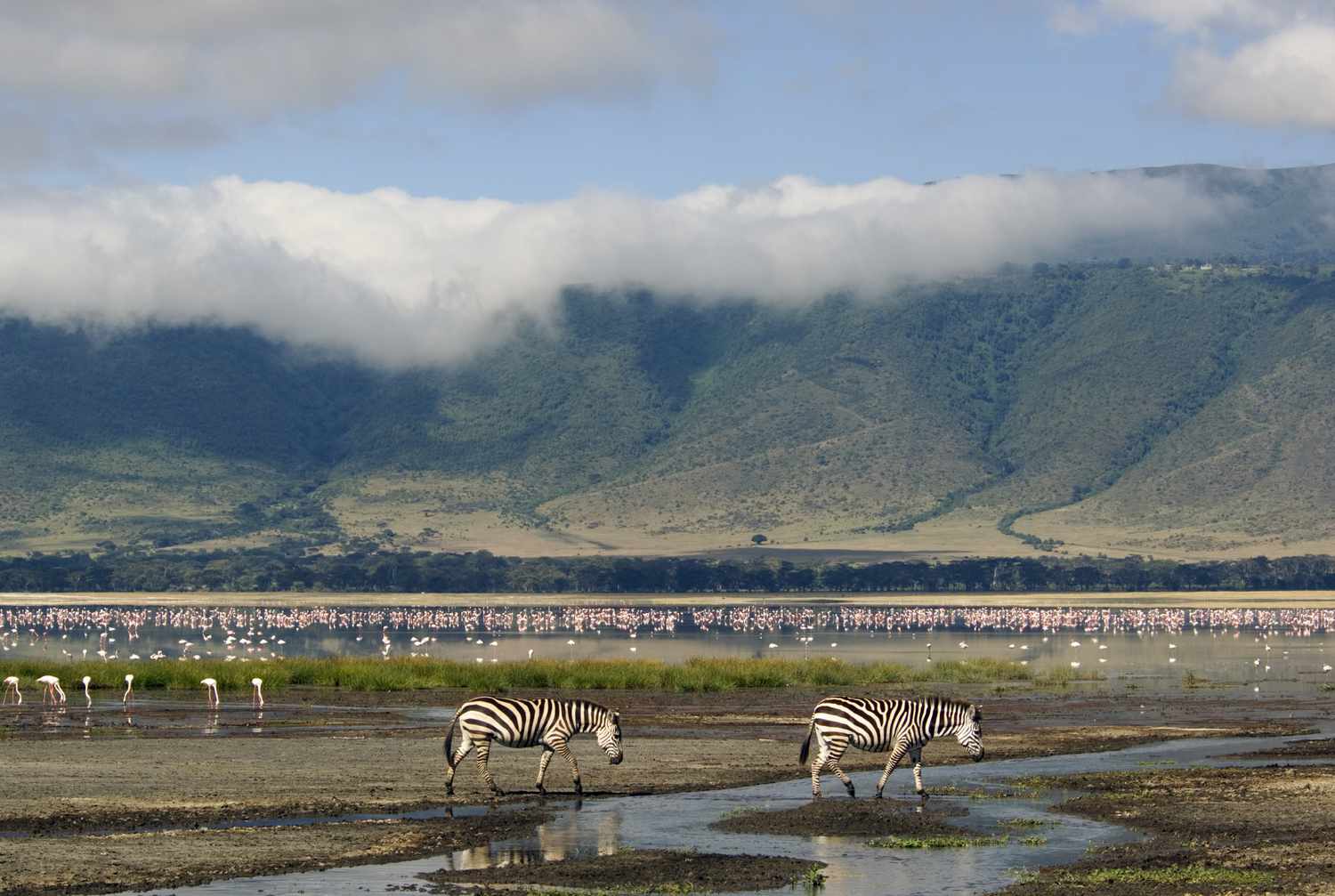Ngorongoro Crater Safari | The Ngorongoro Conservation Area Wildlife safari. Ngorongoro Crater, often dubbed the “African Garden of Eden,” is not just a geological wonder but also a theater for one of the most captivating wildlife migrations in the world. Nestled in Tanzania’s conservation-rich Ngorongoro Conservation Area, this ancient volcanic caldera teems with an astonishing variety of wildlife. In this narrative, we delve into the dramatic wildlife migration that unfolds within the confines of the Ngorongoro Crater, a story of survival, predation, and the circle of life.

Ngorongoro Crater: A Natural Wonder
The Cradle of Biodiversity
Before we embark on the migration saga, it’s essential to grasp the essence of Ngorongoro Crater itself. Created by a colossal volcanic explosion nearly three million years ago, this caldera shelters a range of ecosystems, from lush forests to grassy plains and shimmering lakes. Its diverse habitats provide a haven for a multitude of species, both big and small.
The Players: A Cast of Thousands
The Star-Studded Cast
As we venture into the theater of Ngorongoro Crater, it’s time to meet the cast. The crater is home to an array of iconic African wildlife, including the Big Five – lions, leopards, elephants, buffalos, and rhinos. Alongside these megafauna roam cheetahs, hyenas, zebras, giraffes, hippos, and a kaleidoscope of bird species. But the real stars of the show are the wildebeests and zebras, whose migratory journey takes center stage.
The Great Migration: Nature’s Grand Spectacle
The Movement of Millions
While the Great Migration in the Serengeti Plains is renowned worldwide, the Ngorongoro Crater boasts its own unique migration. The crater’s wildlife doesn’t embark on vast cross-country treks like their Serengeti counterparts. Instead, they follow a seasonal pattern of movement within the caldera itself, driven by the quest for water and fresh grazing grounds.
The Wet Season: Abundance and Calm
An Oasis in the Crater
As the wet season graces the crater, the drama begins to unfold. Lush, green grass carpets the plains, attracting herbivores in droves. Zebras and wildebeests descend from the crater’s rim to feast on the nutritious vegetation. The caldera becomes a thriving oasis, and the animals revel in the abundance of food and water.
The Dry Season: Survival of the Fittest
When the dry season arrives, the once-lush grasslands gradually wither away. Water sources diminish, and the crater’s inhabitants must now make strategic decisions for their survival. The wildebeests and zebras begin their journey upward, seeking cooler temperatures and fresher grazing lands on the crater’s rim.

The Migration Route: Up and Down the Slopes
The migration route within Ngorongoro Crater is not as expansive as the Serengeti’s, but it’s no less challenging. The wildebeests and zebras ascend the steep slopes of the crater wall, a formidable task that requires stamina and determination. As they reach higher altitudes, the cooler temperatures provide relief from the scorching sun below.
Predators on the Prowl: A Feast for the Hunters
The movement of thousands of wildebeests and zebras does not go unnoticed. Predators, particularly lions and hyenas, lie in wait. The dry season offers them the perfect opportunity to stalk their prey. The migration becomes a battle of survival, where the prey must navigate treacherous terrain and relentless hunters.
The Cycle Continues: Birth and Renewal
Amidst the challenges of migration and predation, the cycle of life persists. The migration coincides with the birthing season, and the crater’s plains witness the arrival of countless young animals. This juxtaposition of new life and survival adds depth to the narrative of the migration.
Human Conservation Efforts: Guardians of the Crater
The Ngorongoro Conservation Area Authority plays a crucial role in preserving this unique ecosystem. Conservation efforts aim to maintain the delicate balance between wildlife and human activities, ensuring that the migration and the creatures that depend on it continue to thrive.

Conclusion: A Symphony of Nature
As the sun sets over Ngorongoro Crater, it paints a breathtaking backdrop to this ongoing wildlife saga. The Ngorongoro Crater migration, while not as vast as its Serengeti counterpart, is no less remarkable. It’s a symphony of nature, where survival, predation, birth, and renewal intersect in an ancient caldera’s theater. Witnessing this drama firsthand is a privilege, a chance to become a part of a story that has unfolded for millions of years – the story of Ngorongoro Crater’s wildlife migration.
Other safaris in Tanzania include:







